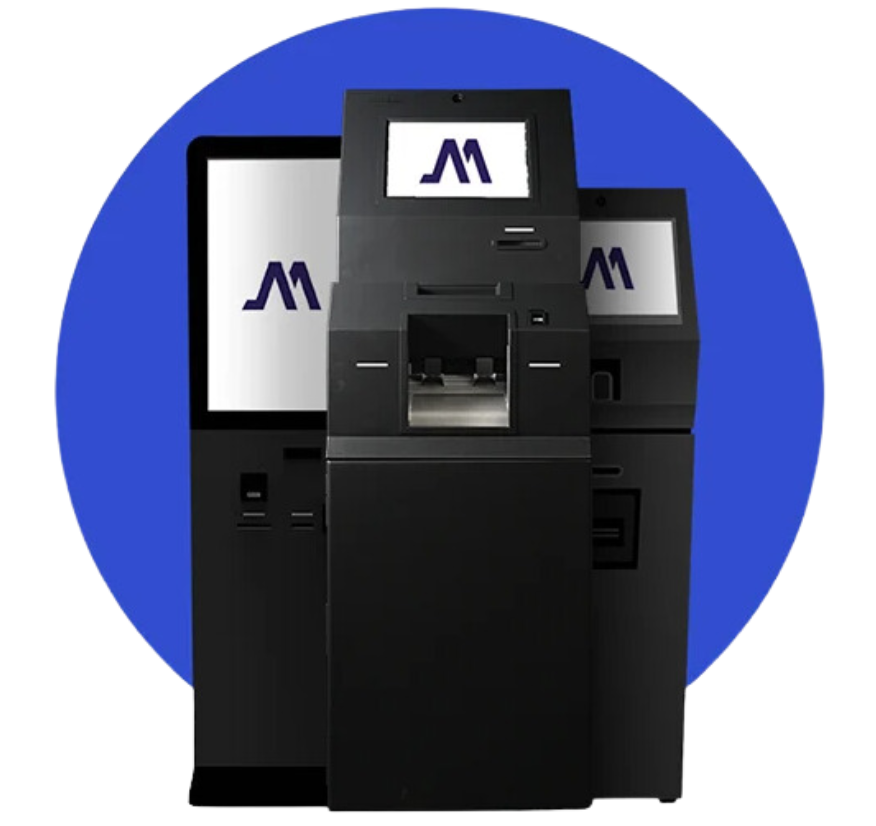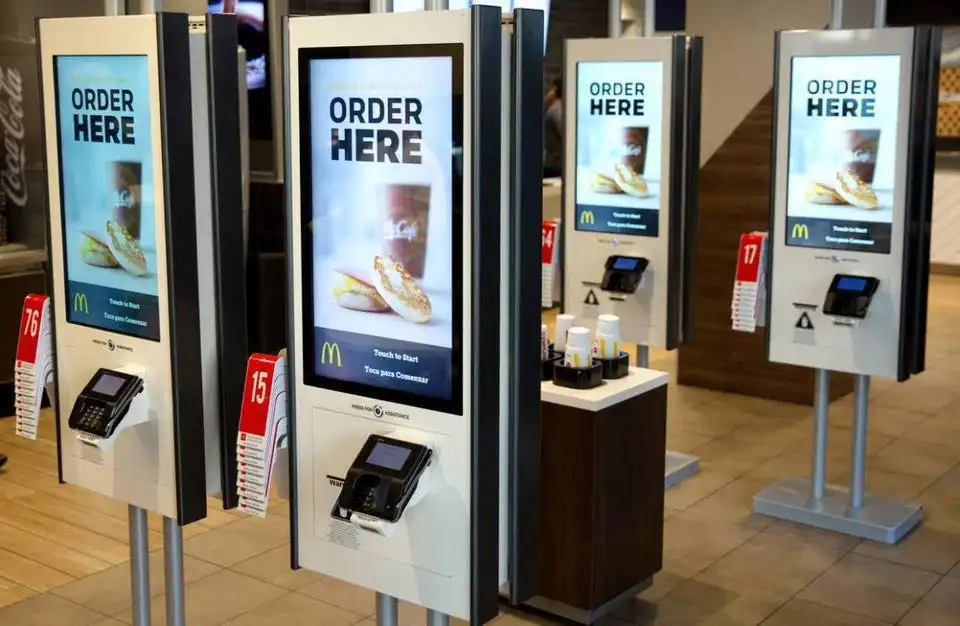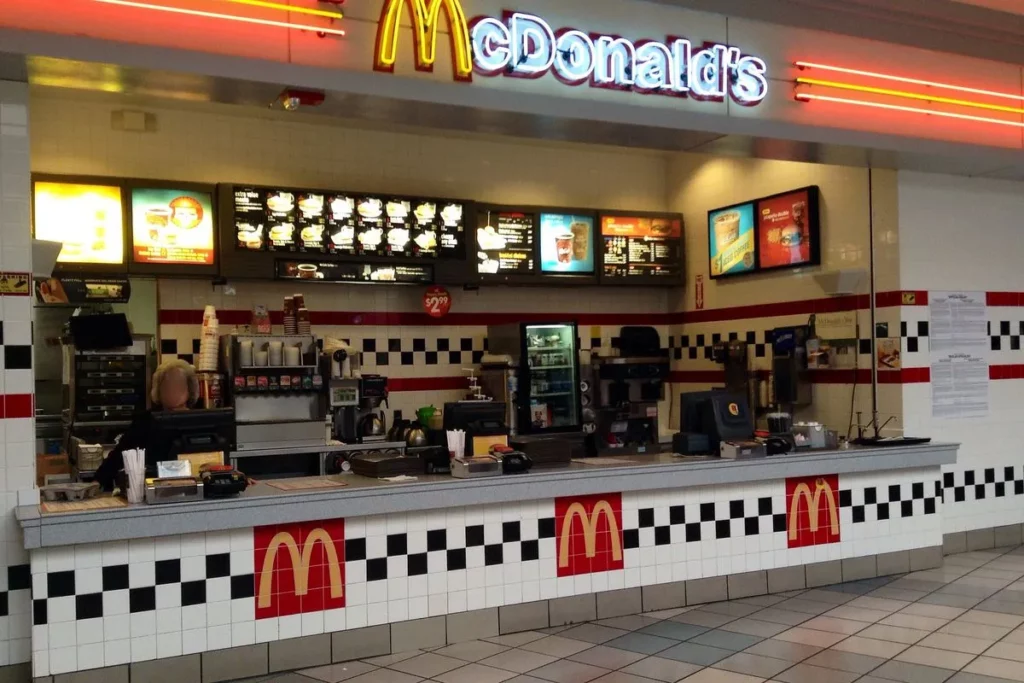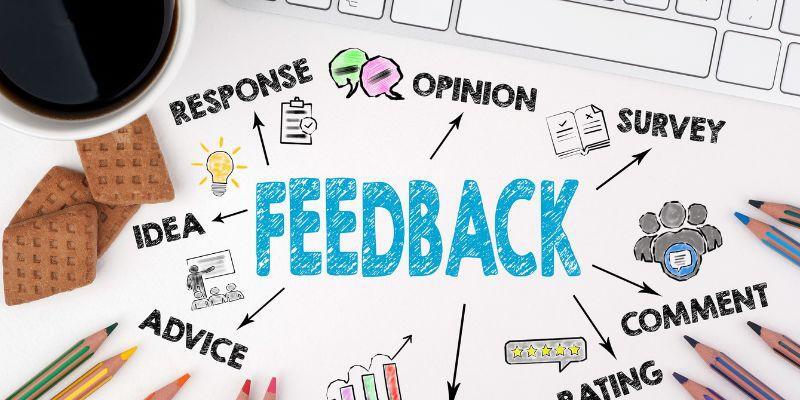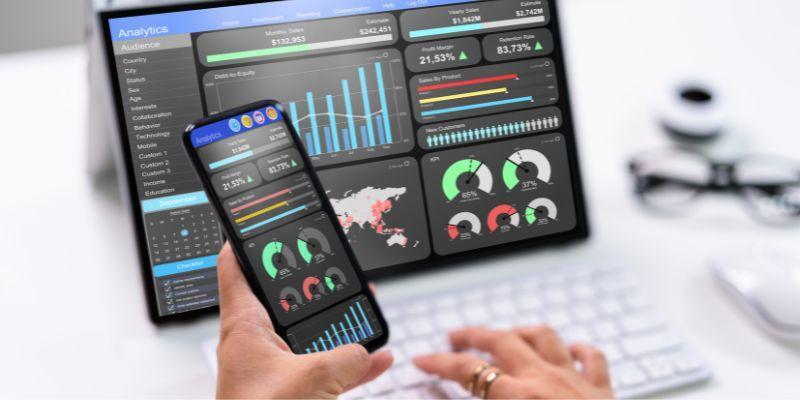In today’s fast-paced world, the customer experience has become a fundamental aspect of success in the highly competitive fast-food industry. As customers increasingly seek convenience, personalization, and efficiency, restaurants must adapt and innovate to meet these evolving demands.
Acknowledging this need, McDonald’s, a global fast-food giant, has embraced technology to enhance their services and elevate the overall dining experience.
Introducing self-service kiosks in McDonald’s establishments represents a significant step forward in revolutionizing how customers interact with the brand and place orders.
How McDonald’s self-service kiosk movement in the QSR industry has revolutionized how customers order fast food and how other industries can learn from their example.
Self-service technologies have trickled down into almost every industry over the past decade. Most notably, fast-food restaurants have reported significant growth as a result of implementing self-service technologies at their locations.
After retail stores and supermarkets reported success using self-service kiosks to enable self-checkout, restaurants and fast food establishments followed, hoping to achieve a similar result. McDonald’s was one of the first movers to adopt and implement self-ordering kiosks on such a large scale.
- In this blog, we are going to cover the top user-friendly features offered by McDonald’s self-service kiosks and how they enhance the overall customer experience;
Features That Make McDonald’s Self-Service Kiosks User-Friendly
McDonald’s self-service kiosks are designed with several features that make them easy to use for customers. Here are some factors that contribute to their user-friendly nature:
1. Intuitive Interface
The kiosks have a straightforward and intuitive user interface that is easy to navigate. The screens display clear and visually appealing options, making it simple for customers to select their desired items.
2. Touchscreen Functionality
The kiosks utilize touchscreen technology, which is familiar to most people and requires minimal effort to operate. Customers can simply tap or swipe on the screen to make selections, similar to using a smartphone or tablet.
3. Clear Instructions
The kiosks provide clear and concise instructions to guide customers through ordering. Whether it’s choosing a menu item, customizing options, or adding extras, the kiosk prompts users with step-by-step instructions, ensuring a smooth and error-free ordering experience.
4. Visual Representation
The kiosks often include high-quality visuals of the menu items, such as images or videos, which help customers make informed choices. Seeing the food options can enhance the ordering experience and reduce any potential confusion.
5. Customization Options
McDonald’s kiosks offer a wide range of customization options, allowing customers to personalize their orders. These options are clearly presented on the screen, enabling customers to tailor their meals to their preferences easily.
6. Payment Flexibility
The kiosks support various payment methods, including cash, credit cards, and mobile payments. This versatility accommodates different customer preferences and simplifies the checkout process.
7. Multilingual Support
McDonald’s self-service kiosks often provide multilingual support, allowing customers to interact with the system in their preferred language. This feature enhances accessibility and improves the overall user experience for a diverse range of customers.
8. Order Preview and Confirmation
Before finalizing their order, customers can review their selections on the kiosk screen, ensuring accuracy. Once the order is confirmed, a receipt is usually provided, giving customers a tangible record of their transaction.
How the Self-Order Kiosks Benefits McDonald’s Business, Customers & Employees
Self-order kiosks offer numerous benefits to McDonald’s business, customers, and employees. Here’s how:
1. Revolutionizing Fast Food with Self-Service Kiosks
The average fast food consumer is extremely impatient; they expect food fast! Beyond fast, they also seek convenience and an easy ordering process.
According to an NRF report, 97% of consumers will back out of their purchase decision if they face inconvenience in making that purchase. Fast food customers are not a fan of long queues; studies show that 75% of customers will simply leave if there are even seven people in line in front of them.
On the other hand, 90% of customers said they would seek an alternative if there were ten people queueing in front of them.
Supermarkets managed to alleviate queues and reduce time spent per customer significantly by using touch screen device that enabled customers to scan their items, pay, and checkout themselves.
Let’s take a look at how McDonald’s leveraged self-service technologies to its advantage.
2. McDonald’s – Self-Ordering Kiosk
Maccas pioneered the restaurant self-service revolution in kiosks for fast food and went all in on self-ordering McDonald’s technology when they learned how successful it had been in the retail industry.
In 2015, McDonald’s began rolling out self-ordering kiosks to its US locations and planned to populate all 14,000 franchises across the States with self-service technology by 2020.
Almost instantly after deploying these self-service kiosks, McDonald’s saw an incremental bump in sales, a 6% growth in sales in the first year after deploying self-service.
So, how do these kiosks work?
Well, McDonald’s implementation of the self-order kiosks is quite simple. It is a freestanding kiosk with a large touch display, a payment unit that accepts cards, and a receipt printer.
One freestanding structure often has a kiosk mounted front and back to house as many kiosks as possible while maintaining a comfortable distance between the freestanding structures.
The ordering application has a well-designed UI with large clear images and text, so visibility is not an issue. The touch capability makes the application easy to navigate, touch, and swipe through just like a smartphone or tablet.
The McDonald’s self-checkout kiosk has virtually eliminated human error while ordering because there are no communication gaps as there may be with the manual ordering process. Ordering through the kiosk is generally a lot quicker as well because you don’t have to repeat your order or deal with any cash.
3. Empowering Staff with Technology
You may think that McDonald’s self-order kiosk may have replaced all the restaurant staff with kiosks since it’s so convenient, but no, McDonald’s retained all the employees working in franchises behind the counters and those working the floors as well.
Incorporating self-service kiosks marked significant transformation phases in our operational strategy. The kiosk improved efficiency and order accuracy while dividing foot traffic between the kiosks and order counters. Plus, employees are always required to assist first-time users of the kiosks or older individuals.
4. Improve Consumer Behavior
For specific individuals, going up to a counter and ordering can be very anxiety-inducing; “what am I going to order? What if they don’t have what I want? Will they customize my order? How many people are there behind me?” are among some of the questions that might go through their heads as they wait in line for their turn, getting more and more anxious as they get closer to the counter.
There was an interesting shift in consumer behavior when presented with the option of ordering via a self-service kiosk. The average order size increased by 20%, and the average order value rose by 30%. Self-service has dramatically changed how people act when ordering.
This increase in order value and size was credited to the kiosk’s ability to upsell; customers who wouldn’t usually buy drinks or dessert were now ordering these add-ons when the kiosk would offer them.
A cashier may forget their script and leave out the ‘Would you like fries with that?’; however, a McDonald’s order machine will never forget.
5. Online Trends
Delivery trends are also shifting. When presented with the option to order via an app or via phone call, most customers will choose apps without hesitation.
When using apps, users tend to order more and use more features in general; they’ll order more calories and more difficult-to-pronounce items, make more customizations, and give more special instructions. When presented with options, customers will use them.
Read more: Enter the arts of the ‘New Normal’, freshly digitized with self-service
6. Improved Order Accuracy
Order accuracy is crucial in ensuring customer satisfaction. Traditional ordering methods often involve miscommunications and errors.
However, self-service kiosks provide a clear visualization of menu items and options, minimizing the chances of misunderstandings.
Customers can easily modify their orders and view real-time updates, ensuring accuracy before finalizing their choices. Additionally, integrating payment methods and automatic calculations eliminates any payment discrepancies, further improving order accuracy.
7. Personalization and Upselling Opportunities
McDonald’s self-service kiosks have opened up new avenues for personalization and upselling. By analyzing customer preferences, these kiosks can offer customized recommendations based on previous orders and dining habits.
Furthermore, they can display promotions, special offers, and menu combinations that may appeal to individual customers.
Additionally, self-service kiosks seamlessly integrate with loyalty programs and rewards, encouraging customers to engage with the brand and enhancing their overall experience.
8. Promoting a Cashless Experience
In an era where digital transactions reign supreme, McDonald’s self-service kiosks cater to the growing preference for cashless payments.
Customers can conveniently complete transactions using various electronic methods, fostering a secure and entirely contactless payment environment that aligns with the evolving expectations of modern consumers.
9. Enhanced Accessibility
Diversity and inclusion are integral components of McDonald’s commitment to creating an accessible and enjoyable dining experience for all. The user-friendly interface of self-service kiosks and the ability to customize orders make the entire ordering process more accessible for individuals with diverse needs.
This includes those with dietary restrictions, language preferences, or varying levels of comfort with traditional order-taking methods.
10. Reduced Queues, Increased Capacity:
By dispersing the order-taking process through self-service kiosks, McDonald’s successfully mitigates the challenges posed by traditional queues at the counter. This improves the overall flow of customers within the restaurant and allows McDonald’s to serve a larger number of patrons simultaneously.
The result is an enhanced restaurant capacity, particularly beneficial during peak hours when efficiency is paramount.
How Do Self-Service Kiosks Affect Other Industries?
This omnichannel approach to QSR sales revolutionized the fast food industry, and other huge names like Starbucks and Subway were quick to capitalize on this opportunity as well. The case study of the QSR industry and its success with self-service technologies serve as an example for other industries like banking and telecommunications.
These larger industries have been slow to implement self-service, and still, they haven’t achieved the scale that restaurants are at currently despite their ability and capacity to do so.
If we take McDonald’s, for example, in only a few years, they managed to equip all of their 14,000 franchises in the US with self-service kiosks and saw significant positive upticks in performance metrics like sales and AOV.
1. Telecom
On the other hand, telecom companies have massive customer bases that could benefit from self-service kiosks; however, their implementation of sim dispensing kiosks and app integrations has been rather slow despite the clear demand.
Mcdonald’s success with self-service is also proof that kiosks won’t replace employees; they can work together to harmonize the flow of customers in and out of service centers in an even more efficient manner.
2. Banking
The situation is similar when it comes to banks. Banks have been using the same ATMs for decades now with little to no innovation in operational design. Some banks have slowly started rolling out CDMs and recyclers with cheque-accepting capabilities, but again it’s slow, and the scale is much smaller compared to QSR or retail industries.
Some Key Takeaways for Banks & Telecoms from Self-Service
- Faster customer onboarding
- 24/7 operations
- Mobile app integration
- Mobile wallet integration
- Seamless Registration
- Full KYC capabilities
- Increased service offerings
So, the question then is, why don’t more industries like banking and telecom invest in self-service technology when there is a clear-cut case in its favor? Well, the integrations and workflows for large financial institutions require more labor and development to successfully implement with apps and kiosks, not to mention the tedious process of implementing security protocols and data encryption.
This would have been a concern a few years ago, but today, self-service solutions providers like Azimut are present globally to facilitate the transition of banks and telecoms towards digital stores and branches.
Azimut
Azimut is a self-service solutions provider that focuses on bringing you the best end-to-end solutions available in this ever-growing industry. Azimut is part of the Wavetec Group, serving some of the largest banks, telecoms, and mobile financial services providers in North America, Africa, and Central & Southeast Asia.
Check out similar blogs:
Frequently Asked Questions – McDonald’s Self-Service Kiosks
How do self-service kiosks contribute to a faster dining experience?
Self-service kiosks streamline the ordering process by allowing customers to browse the menu, customize orders, and complete transactions at their own pace. This reduces wait times, especially during peak hours, resulting in a faster and more efficient dining experience.
Can customers provide feedback about their experience using the kiosk machine?
McDonald’s highly values customer feedback. If you would like to provide feedback or share your experience using the self-service kiosks, you can do so through their customer feedback channels, which may include online surveys or speaking with a manager at the restaurant.
Are kiosks accessible for customers with disabilities?
McDonald’s self-service kiosks are designed to be accessible and inclusive. They offer language selection, text-to-speech functionality, and audio cues to accommodate customers with disabilities. Additionally, McDonald’s staff members are available to provide any necessary assistance.
Final Words
McDonald’s self-service kiosks have emerged as a game-changer in the fast-food industry, significantly enhancing the customer experience. These innovative kiosks have revolutionized how customers interact with the brand, providing greater convenience, customization, and control over their dining journey.
By streamlining the ordering process with a queue management solution, McDonald’s self-service kiosks have eliminated long queues and reduced waiting times, allowing customers to enjoy their meals more quickly. The improved order accuracy and real-time updates ensure that customers receive precisely what they desire, minimizing errors and misunderstandings.
Furthermore, self-service kiosks equipped with a queue management solution have opened up a world of personalization and upselling opportunities. With tailored recommendations, promotions, and integration with loyalty programs, McDonald’s can create a more engaging and rewarding experience for its customers.
This queue management solution optimizes the flow of customers, ensuring efficient and organized service while also providing valuable insights and analytics to enhance operational efficiency and customer satisfaction.
Book a free demo now:[/vc_column_text][/vc_column][/vc_row]
BOOK A FREE DEMO
